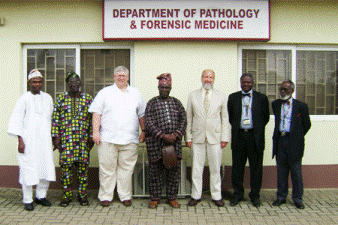Natural Resources, School of

Karl Reinhard Publications
Document Type
Article
Date of this Version
2020
Citation
Published in Archaeological and Anthropological Sciences (2020) 12: 25
DOI: 10.1007/s12520-019-00950-0
Abstract
Coprolites have been a source of study for archeologists due to several reasons: they not only provide information on the life and nutritional habits of ancient individuals but also on their health. In this paper, we processed 10 coprolites collected at La Cueva de Los Muertos Chiquitos (600–800 CE), Rio Zape, Mexico, with acetolysis solution for pollen analysis. The number of pollen grains/gram of each coprolite sample was quantified along with the macroscopic remains of these samples. The main food item ingested by the population was maize, followed by Agave. Squash blossoms were also part of their food source determined by the presence of pollen grains. In macro remains, we identified rodent bones, plant seeds, and Agave fibers. The macroscopic analysis of the samples fits with the analysis of smaller remains, giving an idea of the meal represented by each coprolite analyzed. We relate these results to previous microbiome studies of coprolite samples from the same archeological site and provide a discussion on the relevancy of studying macro- and microremains that can be applied to microbiome interpretation analysis.
Included in
Archaeological Anthropology Commons, Ecology and Evolutionary Biology Commons, Environmental Public Health Commons, Other Public Health Commons, Parasitology Commons


Comments
Copyright © 2020 Springer-Verlag GmbH Germany. Used by permission.